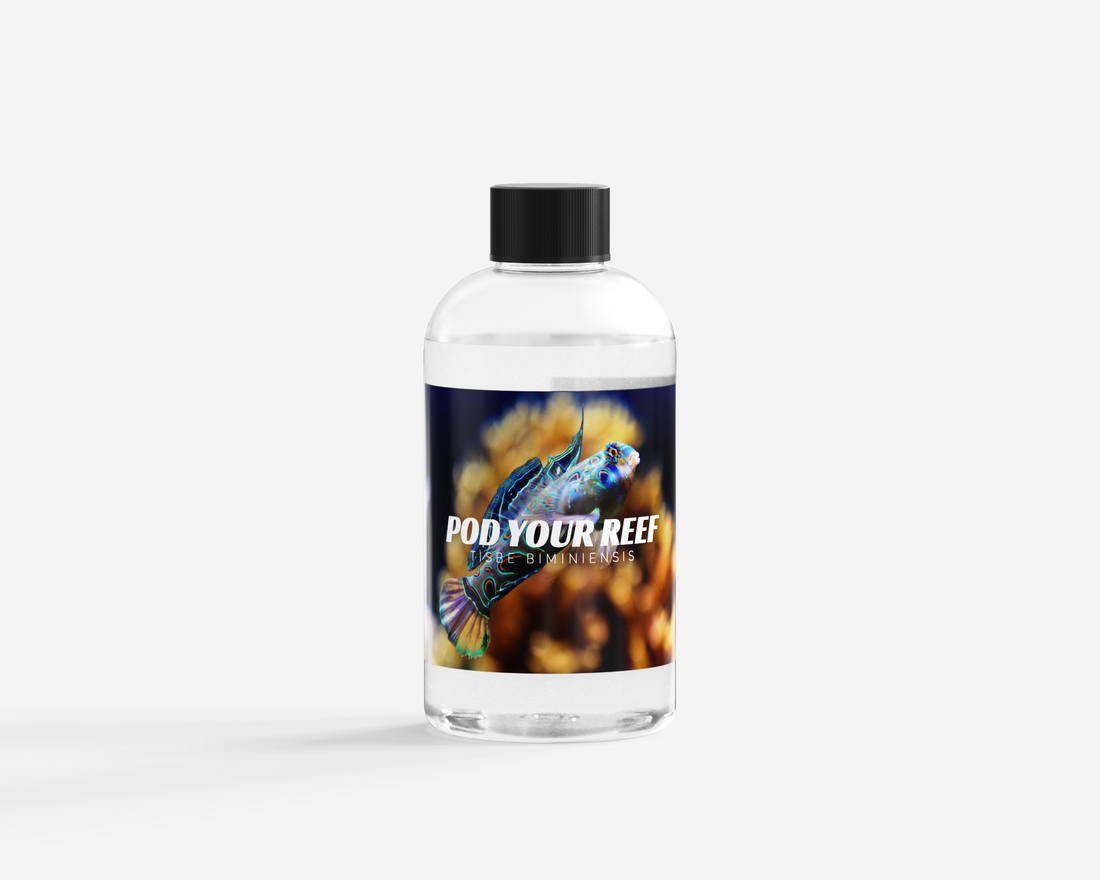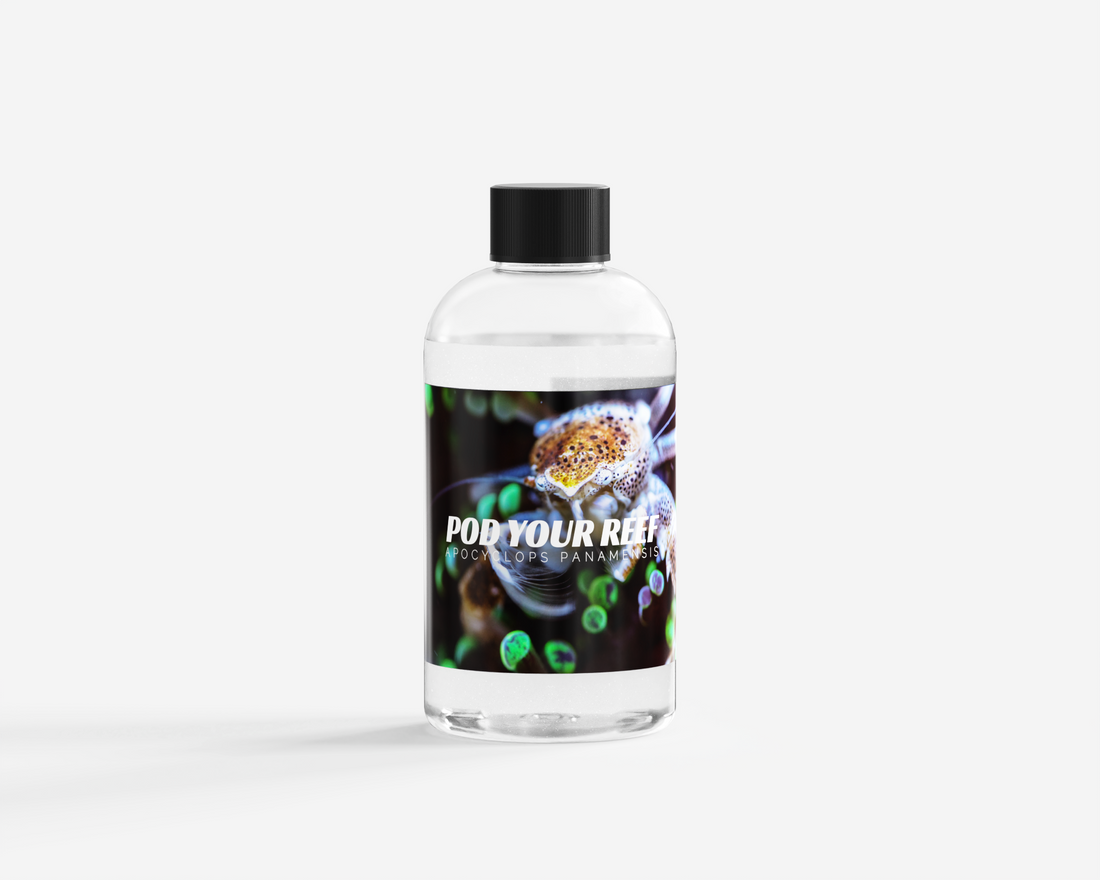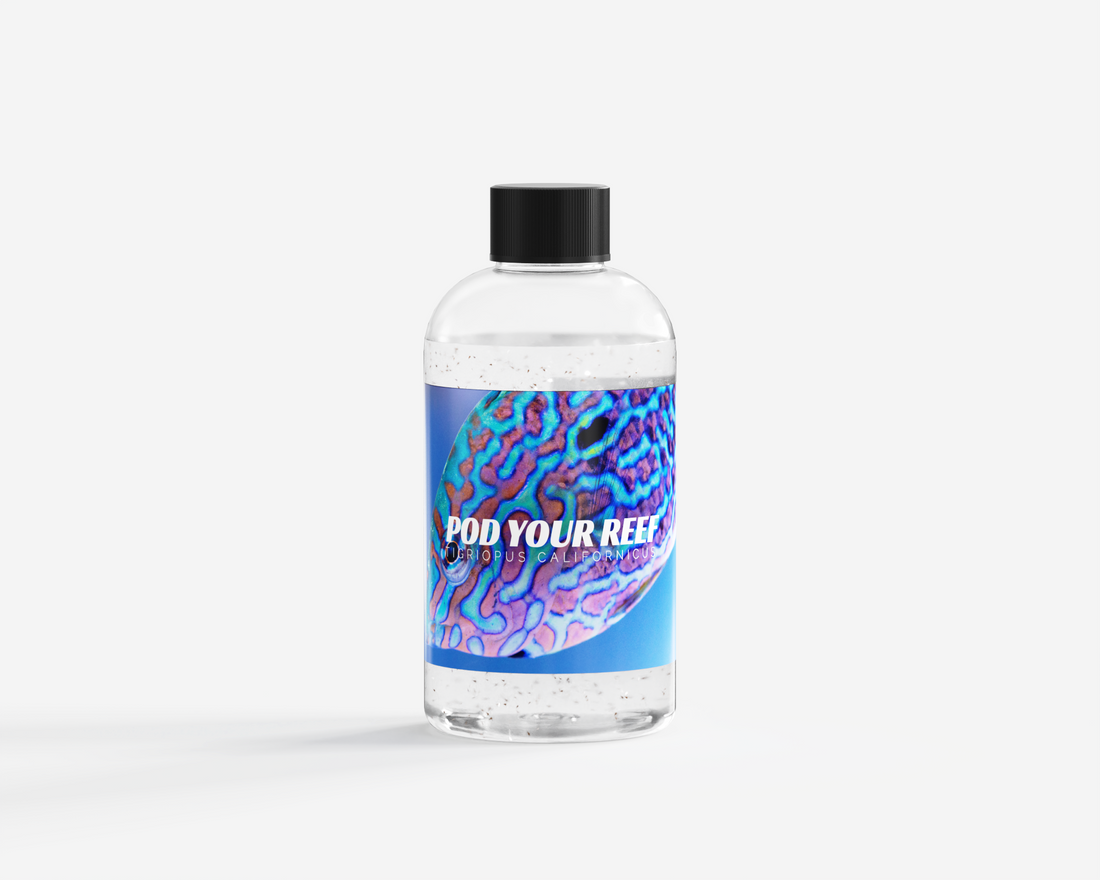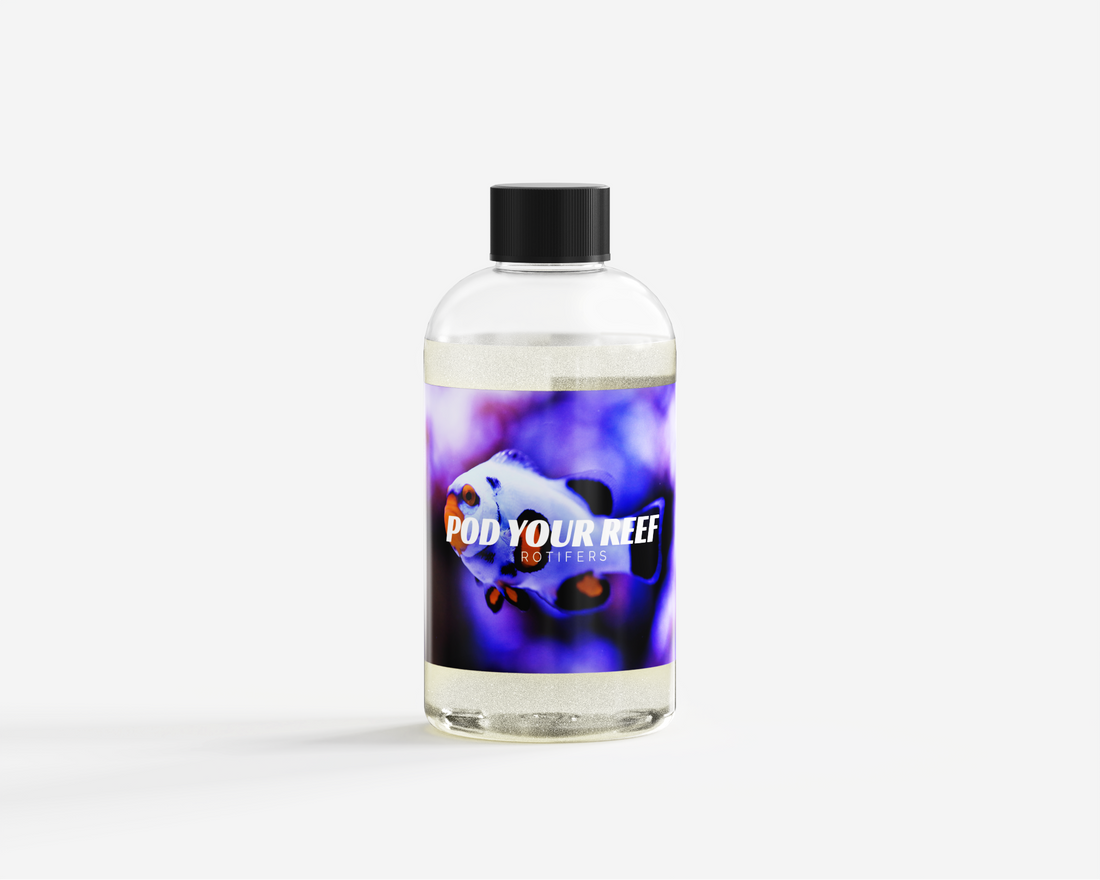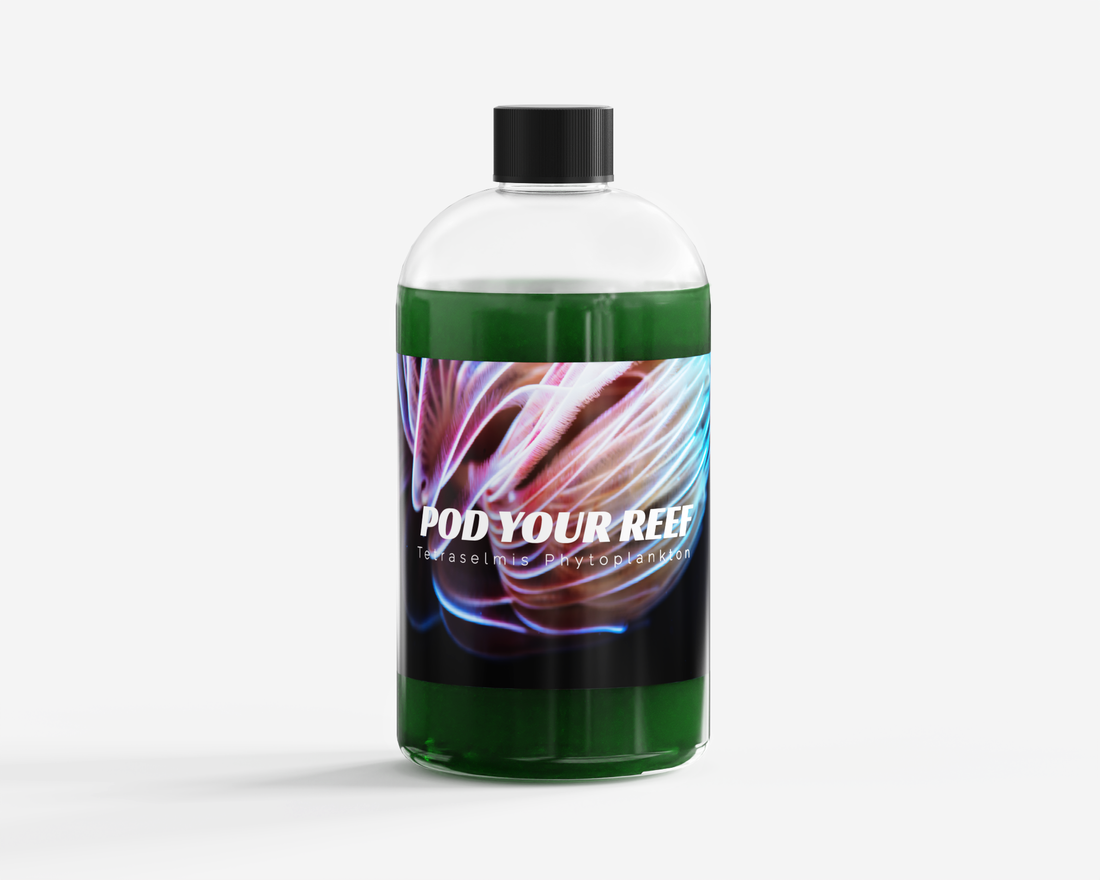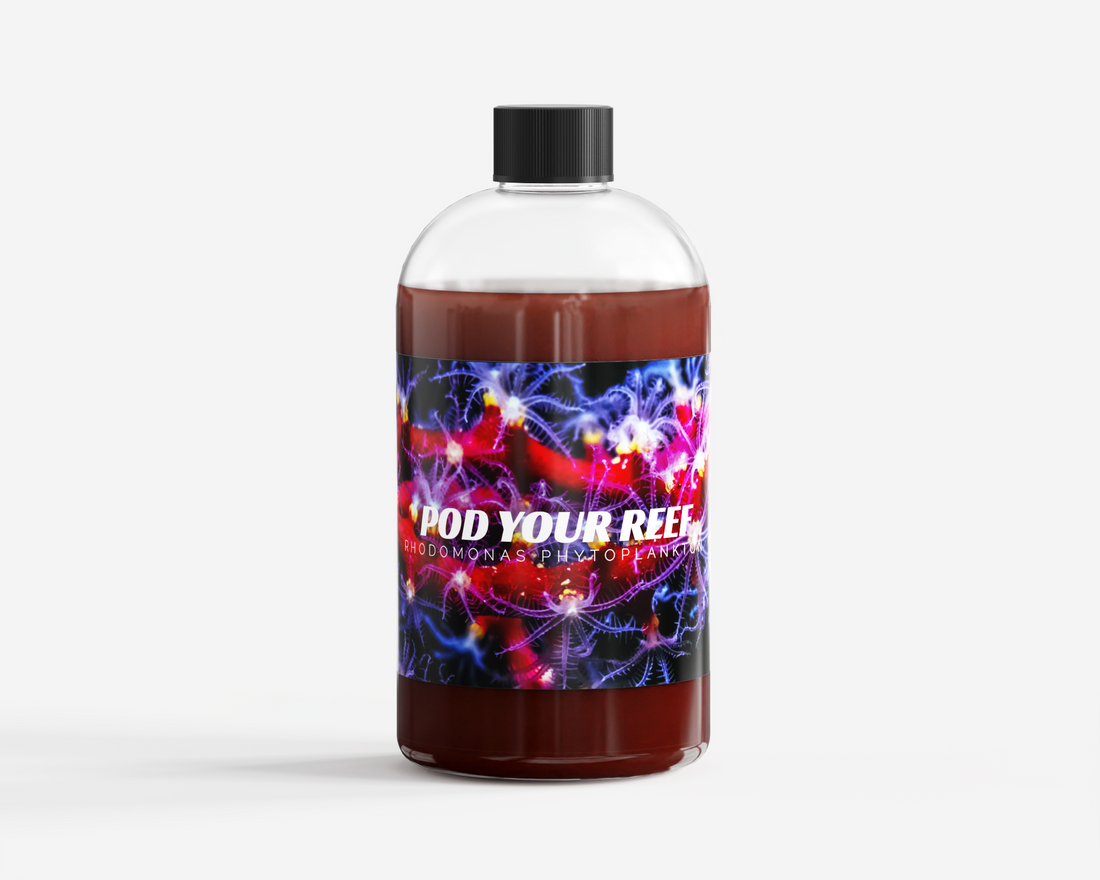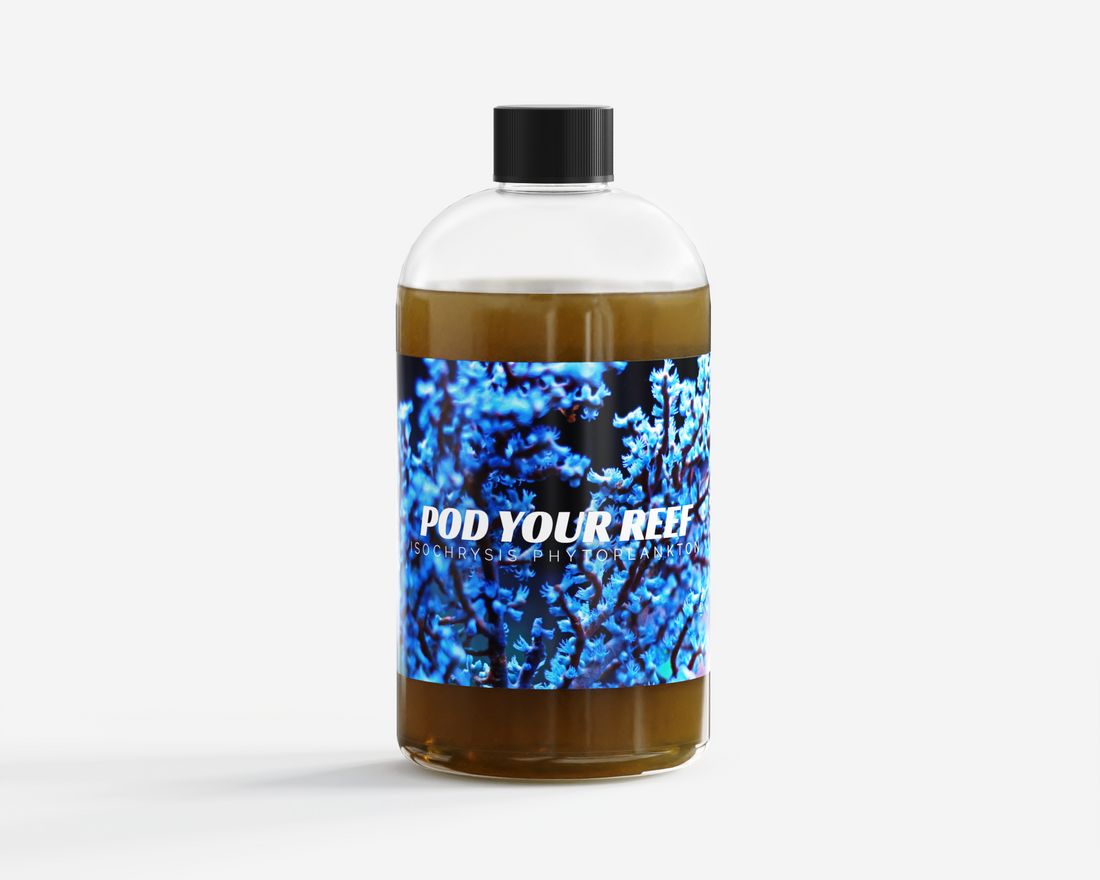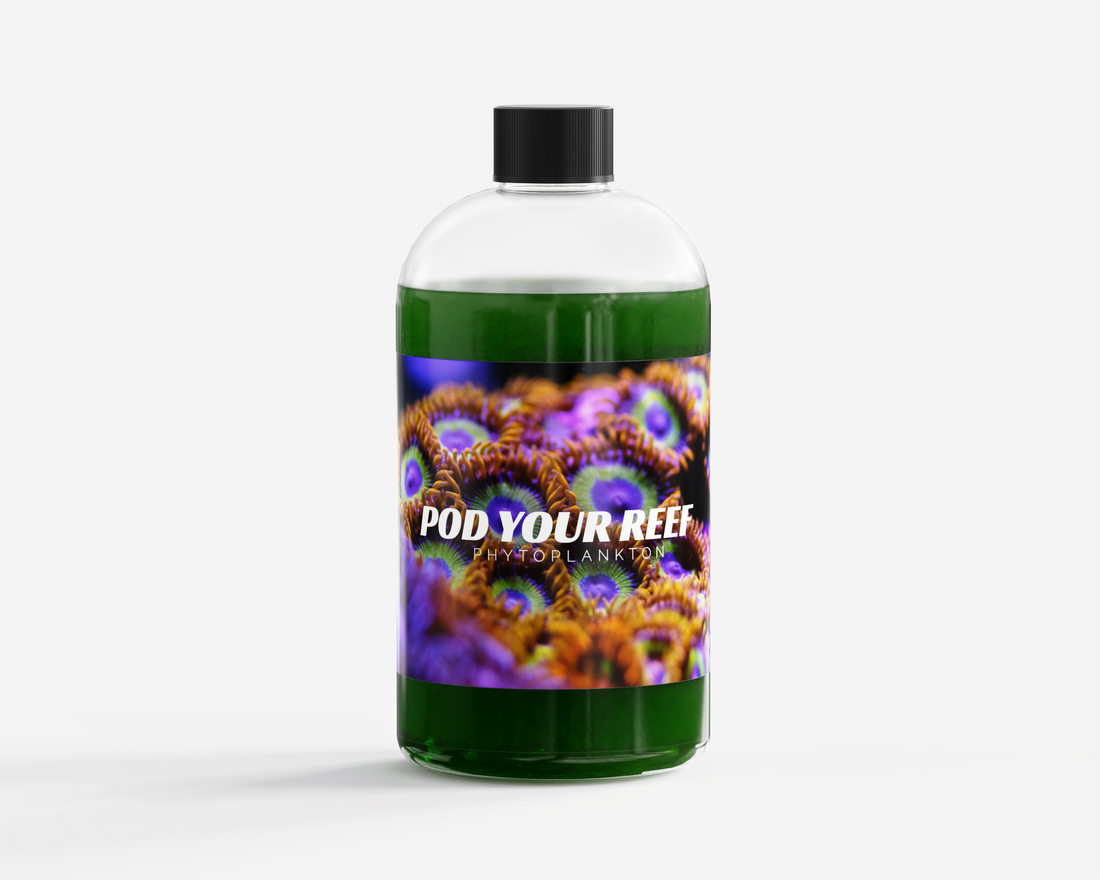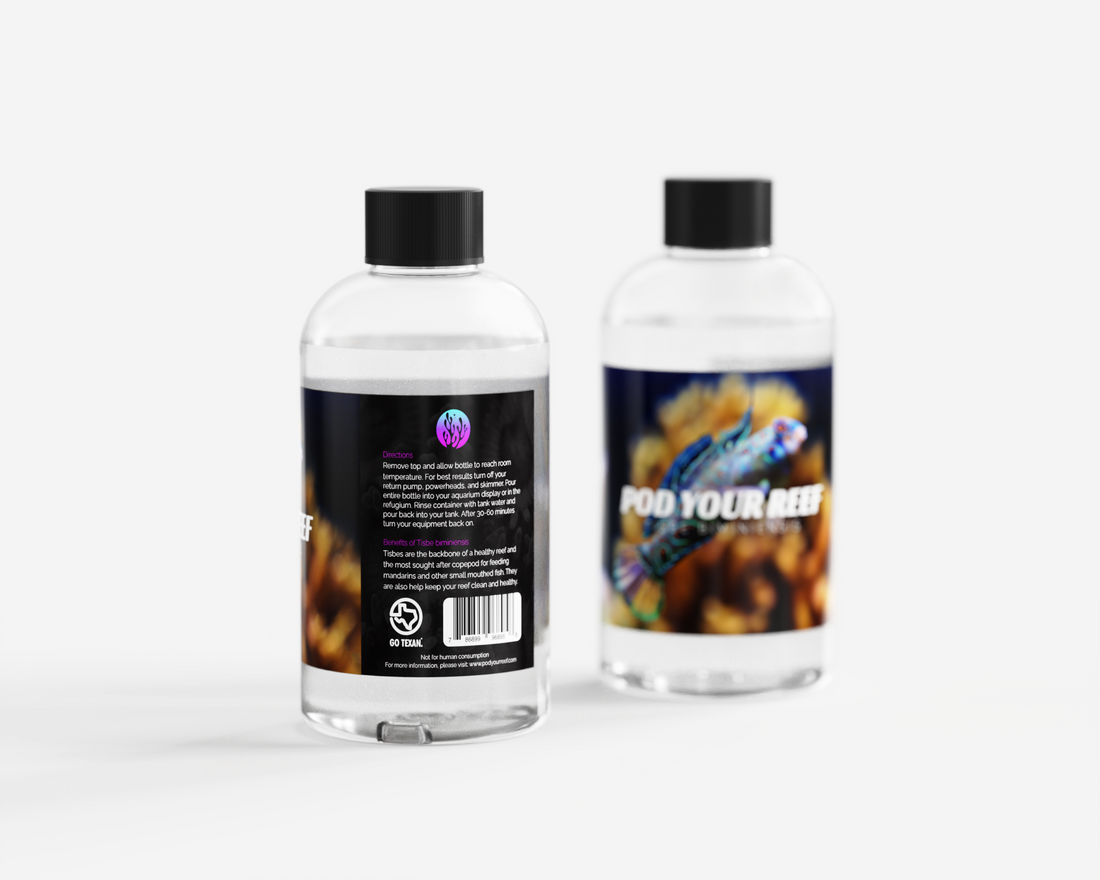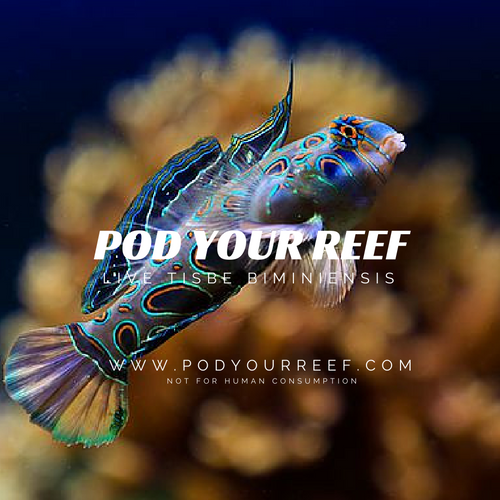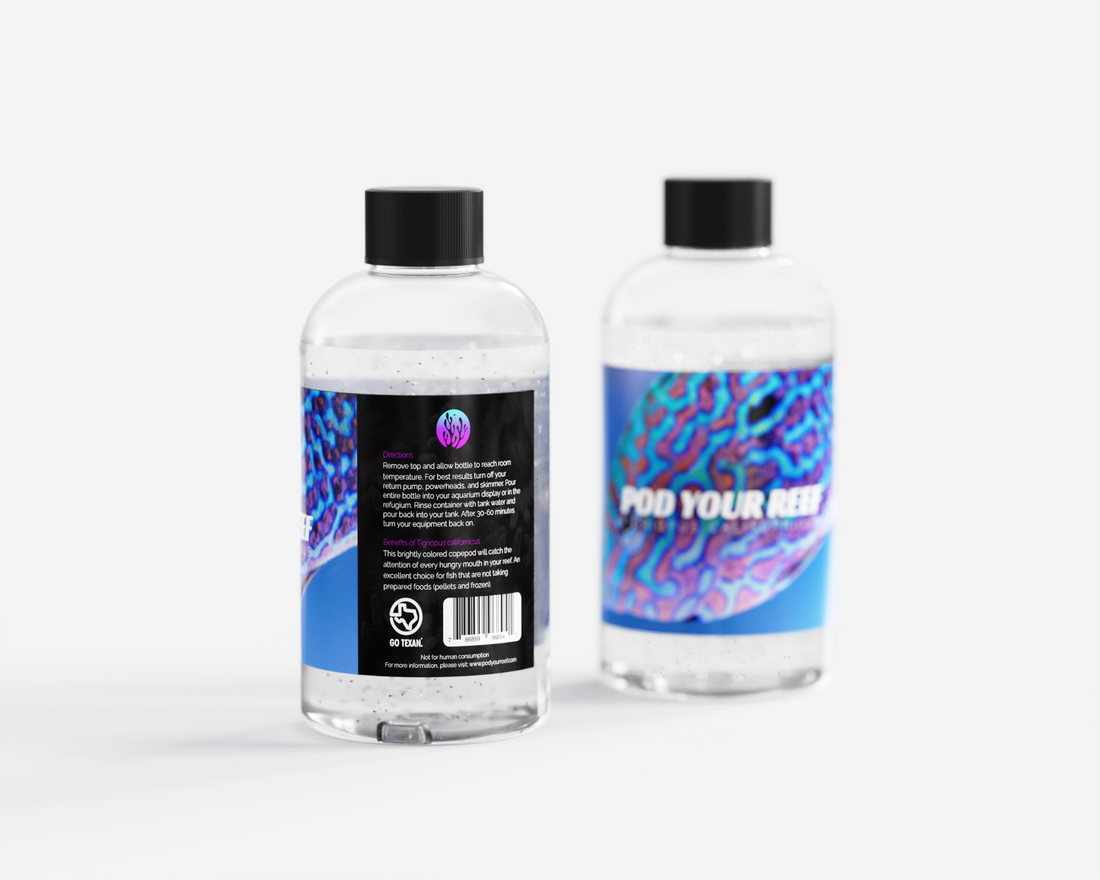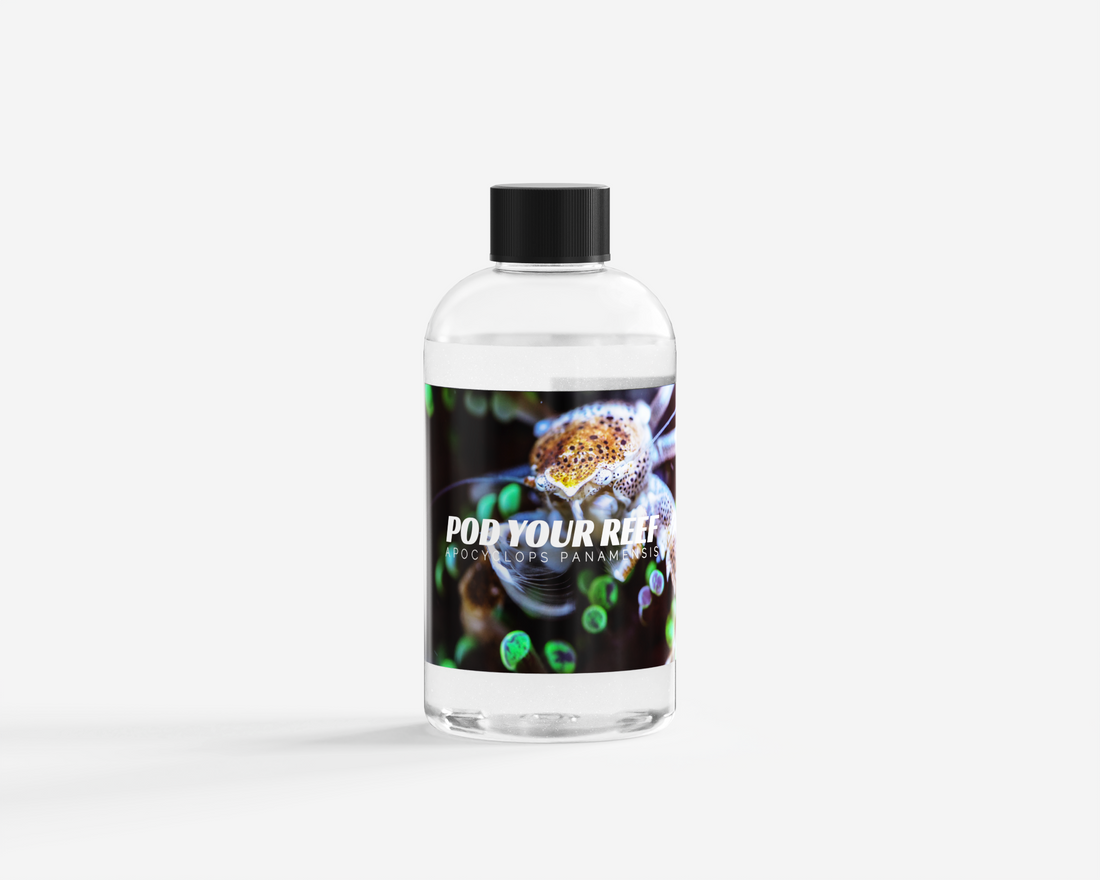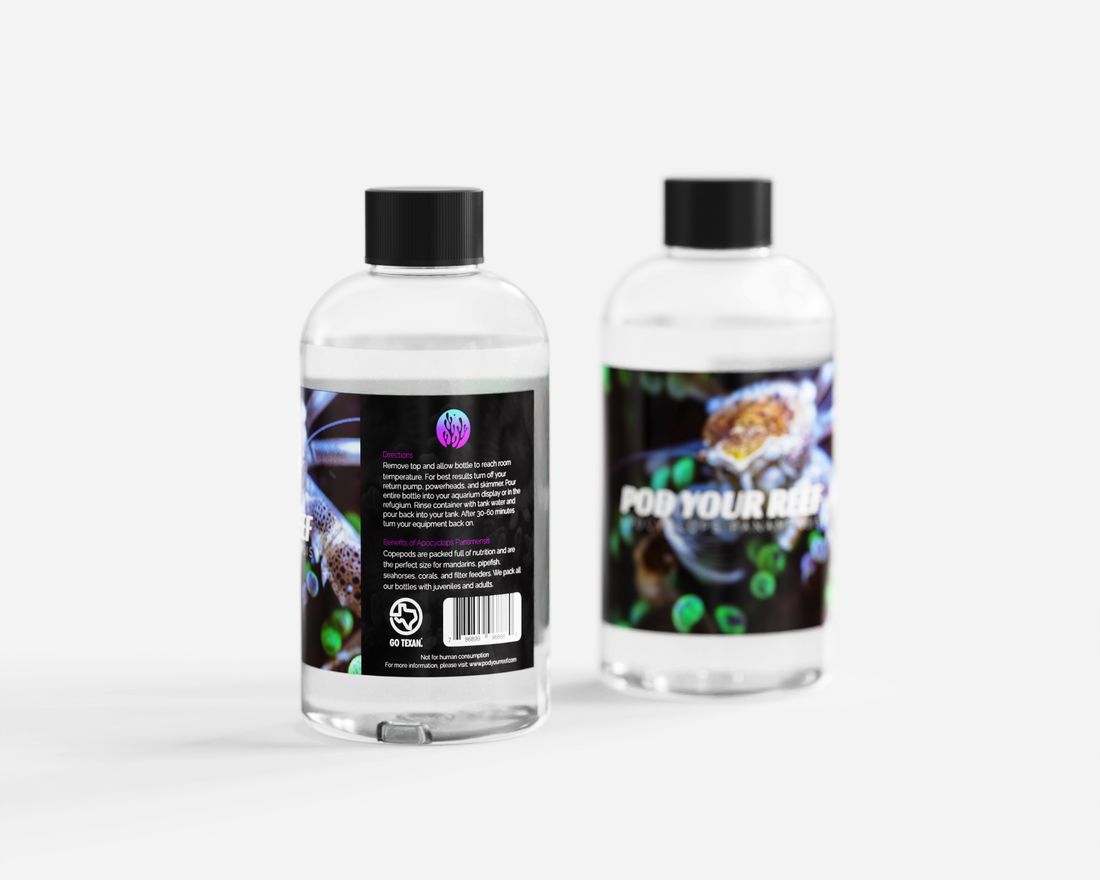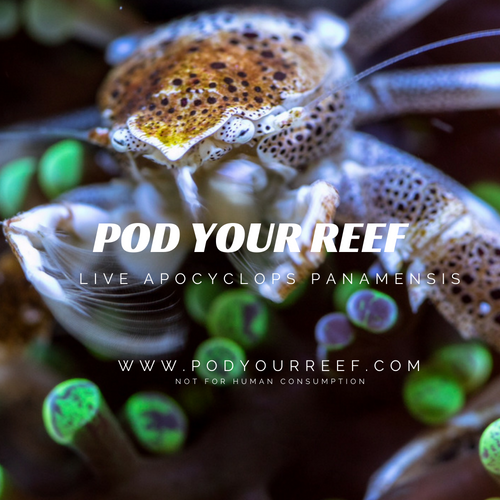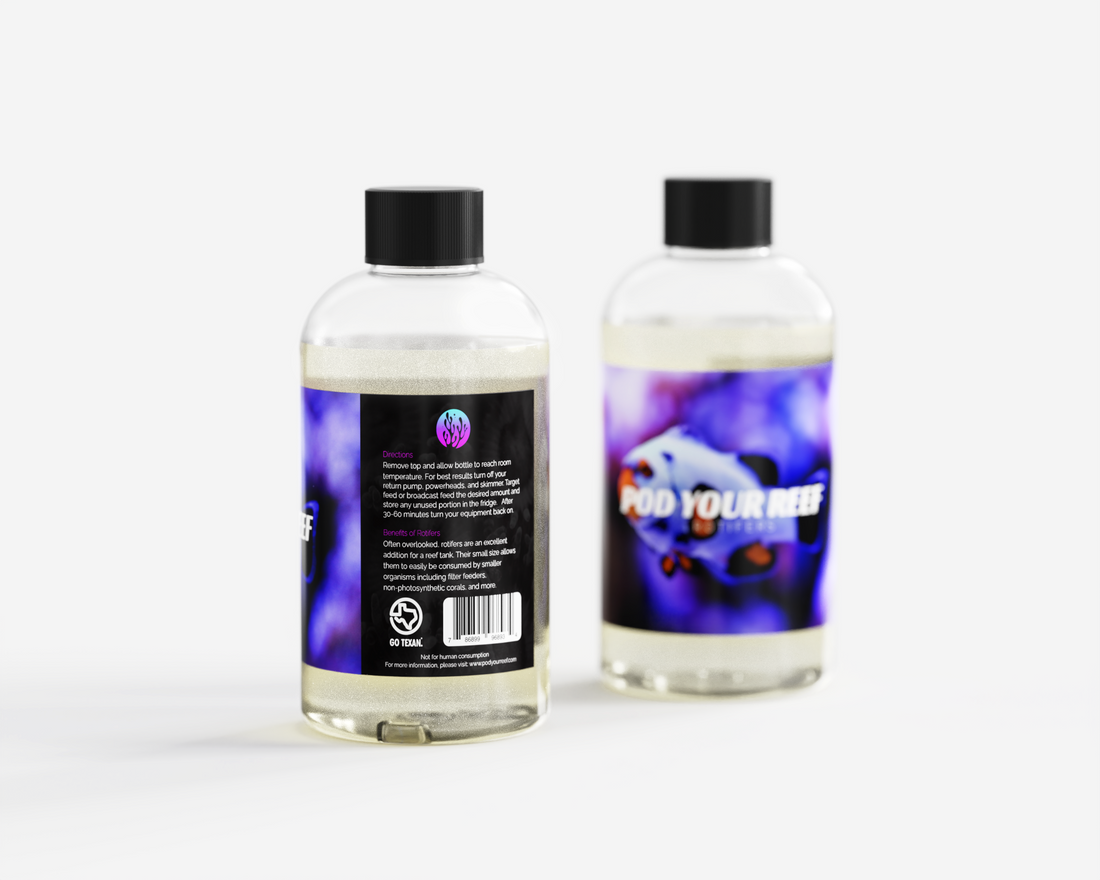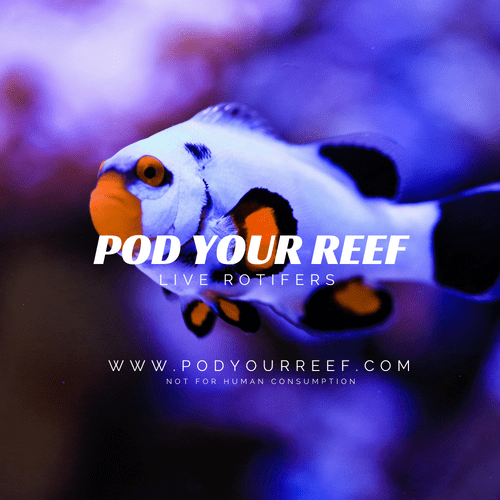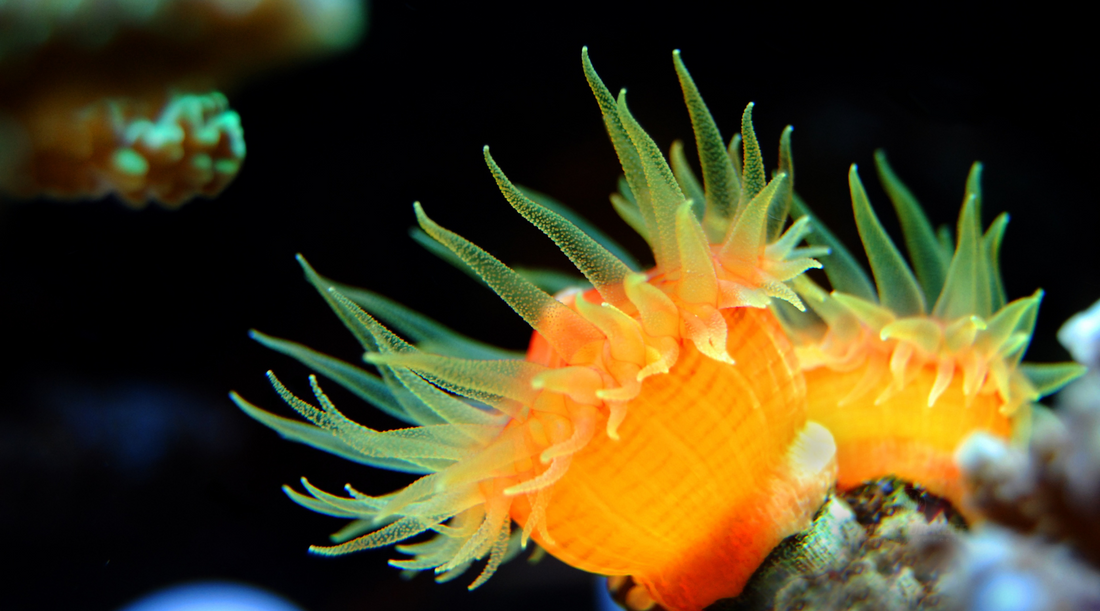
Care
Lifeblood of the Sea: Benefits of Live Rhodomonas Microalgae in the Reef Aquarium
Lifeblood of the Sea: Benefits of Live Rhodomonas Microalgae in the Reef Aquarium
Microalgae are the most important primary producers in the world’s oceans. They facilitate all other members of the marine ecosystem by converting sunlight, carbon dioxide and nutrients into precious proteins, lipids and pigments. Microalgae also act as intimate symbionts to corals and other reef organisms, becoming responsible for their stable growth and fantastic coloration. There are millions of different algae species each completely unique in shape, size, metabolic abilities and nutritional profile. The Red Algae, Rhodomonas salina, has cells rich in proteins and essential fatty acids. These are characteristics which make this species highly desirable as a live feed for marine organisms. Rhodomonas salina was first domesticated as a feed for brine shrimp (Artemia) and copepods to enhance their nutritional profile. It has also been embraced in the hatchery culture of penaeid shrimps and sea scallops. This has led to its mainstream application in the aquaculture of a growing list of marine finfish, shellfish and crustacean species. Rising recognition of this microalgae species in the commercial aquaculture industry has sparked intrigue from reef aquarium hobbyists and coral propagators. Because of its ideal shape, size and nutritional profile, Rhodomonas salina is a promising contender in the realm of reef feeds.
The Power of Phycoerythrin
Like other beneficial microalgal species (Isochrysis galbana), Rhodomonas salina produces the almighty polyunsaturated fatty acids (PUFAs). These Golden Fats (ARA/EPA/DHA) act as a metabolic superfuel for the algae and any critters which consume it. Rhodomonas salina is unique from other algae in that it produces a powerful array of pigments including chlorophyll a/c, alloxanthin and crocoxanthin. Of these pigments, the red phycoerythrin is of particularly important note. Phycoerythrin is a red phycobiliprotein complex produced by the algae to gather light outside of chlorophyll a’s usual spectrum. This pigment not only allows the algae to capture this light, but protects from excessive light exposure well. By absorbing free radical electrons, such pigments act as potent antioxidizing agents. In addition, phycoerythrin plays a role in the transport and redistribution of oxygen. This translates into the health and stability of both the algae cell and the organisms which consume it. In humans, phycoerythrin has been associated with inhibition of cancer cells while inducing beneficial apoptosis. Phycoerythrin absorbs slightly blue-green/yellowish light (565 nm) and manifests as a yellowish-orange color. This coloration is incorporated into the tissue of whatever coral, invertebrate or fish consuming a diet prevalent in red algae. Nearly all the fantastic colors winessed on the reef are created within invisible algae cells, only becoming visible once hyper-concentrated in the flesh of corals!
Phycoerythrin is also strongly associated with symbiotic coral bacteria/algae. Mason et al 2011 proposed that phycoerythrin and other algae-associated pigments explained why Porites astreoides and Acropora palmata larvae overwhelmingly prefer to settle on orange and red substrates over blue, green, black or white. Oswald et al 2007 demonstrated that a varying symbiotic algae/bacteria communities with varying concentrations of phycoerythrin and other phycobiliproteins could manifest starkly different visual color variation in hard coral species such as Catalaphyllia jardinei, Lobophyllia hemprichii and Montastrea cavernosa. This raises the fascinating question of whether or not dosing pigment-rich feeds such as Rhodomonas salina could sway the coloration of corals in aquariums.

Blood in the Water: Feeding Live Rhodomonas salina to the Reef
Rhodomonas salina is an ideal reef feed because of all the characteristics which has made it so attractive to commercial aquaculture. It thrives at reef salinities (20-35ppt), ensuring that algae cells survive until they are eaten. While they persist in the reef aquaria, Rhodomonas salina cells photosynthesize, ravenously consuming nitrates and phosphates. Rhodomonas also benefit from the lighting of reef aquaria, which is largely in the blue spectrum (450-540 nm). Blue light, high light intensity (260- 360 PAR1), and low nitrate/ phosphate concentrations are all associated with higher lipid and phycoerythrin production in Rhodomonas salina.
Rhodomonas salina is an ideal live feed for a wide variety of SPS corals, LPS corals, sabellid worms, tridacnid clams, electric scallops and other filter feeding species. Rhodomonas salina cells are 9-20um in size and do not have any hard protruding structures or indigestible cell walls. This makes them ideal forage for small-mouthed filter feeding organisms and an excellent tool for satiating finicky aphotosynthetic corals such as sun corals (Tubastrea sp.) or gorgonian twig corals (Homphyton sp.) as well as a variety of splendid marine sponge species. Rhodomonas salina also performs well as a way to supercharge a colony of Apocyclops sp., Tisbe sp. or Tigriopus sp. copepods. Feeding Rhodomonas salina not only allows pod colonies to boom in numbers, but ensures that each individual is gut-loaded with phycoerythrin and golden fats! The benefit to feeding live Rhodomonas salina cells over a dead, concentrated algae paste is the nutritional delivery associated with the living algae microbiome. This not only includes the brute nutrition of the algae cell itself, but the probiotics, prebiotics, proenzymes and other sources of nuanced nutrition needed to support the long-term health of exotic marine life. The presence of living Rhodomonas salina cells also act as an appetite stimulant, causing many coral species to rapidly release their feeding appendages. Microalgae maximizes feeding efficiency of powdered feeds applied to such corals.
Rhodomonas salina will become a growing asset to the reef aquarium community. There is a growing appreciation for feeding live microalgae to reefs because it is a way of delivering powerful nutrition, through golden fats and phycoerythrin, while reducing nitrate and phosphates. Because of its outstanding nutritional profile and adaptive environmental tolerance, Rhodomonas salina will advance the aquaculture of new marine species while fortifying the health of those already in the reef hobby.
1 PAR= μmol photon m-2s-1 of photosynthetically active light.Literature Consulted
Bartual, A., Lubián, L. M., Gálvez, J. A., & Niell, F. X. (2002). Effect of irradiance on growth,photosynthesis, pigment content and nutrient consumption in dense cultures of Rhodomonas salina (Wislouch)(Cryptophyceae). Ciencias Marinas, 28(4), 381-392.
Gagné, R., Tremblay, R., Pernet, F., Miner, P., Samain, J. F., & Olivier, F. (2010). Lipid requirements of the scallop Pecten maximus (L.) during larval and post-larval development in relation to addition of Rhodomonas salina in diet. Aquaculture, 309(1-4), 212-221.
Guevara, M., Arredondo-Vega, B. O., Palacios, Y., Saéz, K., & Gómez, P. I. (2016). Comparison of growth and biochemical parameters of two strains of Rhodomonas salina (Cryptophyceae) cultivated under different combinations of irradiance, temperature, and nutrients. Journal of applied phycology, 28(5), 2651-2660.
Hammer, A., Schumann, R., & Schubert, H. (2002). Light and temperature acclimation of Rhodomonas salina (Cryptophyceae): photosynthetic performance. Aquatic Microbial Ecology, 29(3), 287-296.
Häubner, N., Sylvander, P., Vuori, K., & Snoeijs, P. (2014). Abiotic stress modifies the synthesis of alpha‐tocopherol and beta‐carotene in phytoplankton species. Journal of phycology, 50(4), 753-759.
Jarett, J. K., MacManes, M. D., Morrow, K. M., Pankey, M. S., & Lesser, M. P. (2017). Comparative genomics of color morphs in the coral Montastraea cavernosa. Scientific reports, 7(1), 1-13.
Kaňa, R., Kotabová, E., Sobotka, R., & Prášil, O. (2012). Non-photochemical quenching in cryptophyte alga Rhodomonas salina is located in chlorophyll a/c antennae. PLoS One, 7(1),e29700.
Kitano, M., Matsukawa, R., & Karube, I. (1997). Changes in eicosapentaenoic acid content of Navicula saprophila, Rhodomonas salina and Nitzschia sp. under mixotrophic conditions. Journal of applied phycology, 9(6), 559-563.
Latsos, C. (2022). Rhodomonas Unravelled.
Latsos, C., Bakratsas, G., Moerdijk, T., van Houcke, J., & Timmermans, K. R. (2021). Effect of salinity and pH on growth, phycoerythrin, and non-volatile umami taste active compound concentration of Rhodomonas salina using a D-optimal design approach. Journal of Applied Phycology, 33(6), 3591-3602.
Li, H., Wang, W., Wang, Z., Lin, X., Zhang, F., & Yang, L. (2016). De novo transcriptome analysis of carotenoid and polyunsaturated fatty acid metabolism in Rhodomonas sp. Journal of applied phycology, 28(3), 1649-1656.
Marraskuranto, E., Raharjo, T. J., Kasiamdari, R. S., & Nuringtyas, T. R. (2018). Influence of salinity on growth and phycoerythrin production of Rhodomonas salina. Squalen Bull Mar Fish Postharvest Biotechnol, 13, 109.
Mason, B., Beard, M., & Miller, M. W. (2011). Coral larvae settle at a higher frequency on red surfaces. Coral Reefs, 30(3), 667-676.
McLeroy‐Etheridge, S. L., & McManus, G. B. (1999). Food type and concentration affect chlorophyll and carotenoid destruction during copepod feeding. Limnology and Oceanography, 44(8), 2005-2011.
Morehead, D. T., Battaglene, S. C., Metillo, E. B., Bransden, M. P., & Dunstan, G. A. (2005).Copepods as a live feed for striped trumpeter Latris lineata larvae. Copepods in aquaculture,195-208.
de Oliveira-Júnior, R. G., Nicolau, E., Bonnet, A., Prunier, G., Beaugeard, L., Joguet, N., ... &
Picot, L. (2020). Carotenoids from Rhodomonas salina Induce Apoptosis and Sensitize A2058 Melanoma Cells to Chemotherapy. Revista Brasileira de Farmacognosia, 30(2), 155-168.
Oostlander, P. C., van Houcke, J., Wijffels, R. H., & Barbosa, M. J. (2020). Optimization of Rhodomonas sp. under continuous cultivation for industrial applications in aquaculture. Algal Research, 47, 101889.
Oswald, F., Schmitt, F., Leutenegger, A., Ivanchenko, S., D'Angelo, C., Salih, A., ... & Wiedenmann, J. (2007). Contributions of host and symbiont pigments to the coloration of reef corals. The FEBS journal, 274(4), 1102-1122.
Peltomaa, E., Johnson, M. D., & Taipale, S. J. (2018). Marine cryptophytes are great sources of EPA and DHA. Marine drugs, 16(1), 3.
Reuter, K. E., & Levitan, D. R. (2010). Influence of sperm and phytoplankton on spawning in the echinoid Lytechinus variegatus. The Biological Bulletin, 219(3), 198-206.
Sánchez-Quinto, A., & Falcón, L. I. (2019). Metagenome of Acropora palmata coral rubble: Potential metabolic pathways and diversity in the reef ecosystem. Plos one, 14(8), e0220117.
Tang, K. W. (2005). Copepods as microbial hotspots in the ocean: effects of host feeding activities on attached bacteria. Aquatic Microbial Ecology, 38(1), 31-40.
Thoisen, C. (2017). Optimizing the Cultivation of the Cryptophyte: Rhodomonas Salina for Aquaculture. Department of Science and Environment, Roskilde University.
Tremblay, R., Cartier, S., Miner, P., Pernet, F., Quéré, C., Moal, J., ... & Samain, J. F. (2007). Effect of Rhodomonas salina addition to a standard hatchery diet during the early ontogeny of the scallop Pecten maximus. Aquaculture, 262(2-4), 410-418.
Vogt, R. A., Ignoffo, T. R., Sullivan, L. J., Herndon, J., Stillman, J. H., & Kimmerer, W. J. (2013). Feeding capabilities and limitations in the nauplii of two pelagic estuarine copepods, Pseudodiaptomus marinus and Oithona davisae. Limnology and oceanography, 58(6), 2145-2157.
Vu, M. T. T., Douëtte, C., Rayner, T. A., Thoisen, C., Nielsen, S. L., & Hansen, B. W. (2016). Optimization of photosynthesis, growth, and biochemical composition of the microalga Rhodomonas salina—an established diet for live feed copepods in aquaculture. Journal of applied phycology, 28(3), 1485-1500.
Vu, M. T. T., Jepsen, P. M., Jørgensen, N. O., Hansen, B. W., & Nielsen, S. L. (2019). Testing the yield of a pilot‐scale bubble column photobioreactor for cultivation of the microalga Rhodomonas salina as feed for intensive calanoid copepod cultures. Aquaculture Research, 50(1), 63-71.
Xie, J., Chen, S., & Wen, Z. (2021). Effects of light intensity on the production of phycoerythrin and polyunsaturated fatty acid by microalga Rhodomonas salina. Algal Research, 58, 102397.
Yamamoto, S., Bossier, P., & Yoshimatsu, T. (2020). Biochemical characterization of Rhodomonas sp. Hf-1 strain (cryptophyte) under nitrogen starvation. Aquaculture, 516, 734648.

